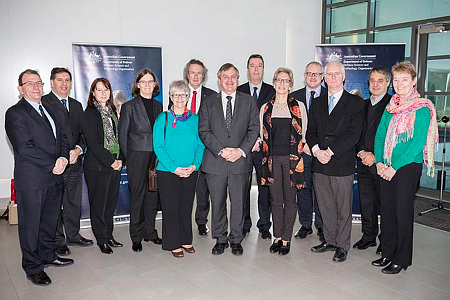New program to strengthen Defence research
by ANZDD on 23-Jul-2014

A new partnership program between the Department of Defence and the innovation sector launched today will strengthen and enhance the impact of Defence science research in Australia.
The Defence Science Partnerships program, led by the Defence Science and Technology Organisation (DSTO), will enable Australian universities to work in a coordinated way with Defence and national security agencies on collaborative research projects.
The program complements DSTO’s Industry Alliance program which forges closer collaborative research and development activity with industry.
“This program provides a uniform model for universities to engage with Defence on research projects and ensures a consistent approach to intellectual property and cost sharing,” Chief Defence Scientist Dr Alex Zelinsky said.
The program was developed in consultation with a working group from the University of Adelaide, RMIT, Australian National University, University of Queensland, University of New South Wales, Monash University, Charles Darwin University and the University of Tasmania.
Involvement in the program will enable universities to leverage funding from DSTO and other sources, and share research infrastructure.
“The program’s strength lies in its potential to harness Australia’s world-class research and better align it to Defence priorities through increased collaboration and a greater sharing of resources and infrastructure,” Dr Zelinsky said.
“Through the partnerships program, we will work with our university partners to also promote careers in science, technology, engineering and mathematics (STEM)
and increase the number of STEM students.”
The program will play an important role in fostering a more robust innovation system.
“A healthy innovation system can be facilitated by organisations such as DSTO engaging in the university sector to help shape research directions and national capabilities in priority technology areas for end-users,” Dr Zelinsky said.







